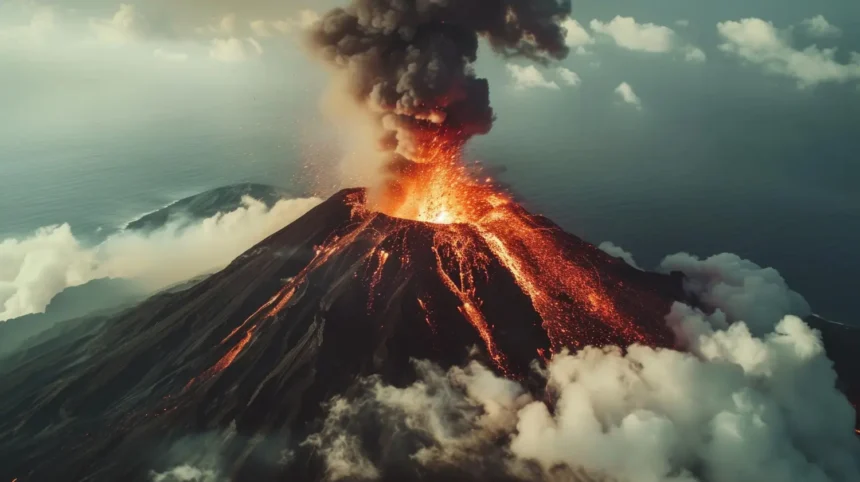Introduction
Imagine a powerful force that can obliterate cities, reshape landscapes, and even alter the global climate. That force lies dormant beneath our feet, waiting to erupt in a fiery cataclysm. These aren’t scenes from a disaster movie – they’re the reality of the most dangerous volcanoes on our planet.
Often seen as majestic and awe-inspiring, Volcanoes have a destructive power that has shaped civilizations and landscapes for millennia. A select few stand out as the most dangerous volcanoes, posing significant threats to human life and the environment. In this article, we embark on a thrilling journey to explore Earth’s top 10 most dangerous volcanoes.
We’ll explore their eruption histories, the unique hazards they present, and the ongoing efforts to monitor and mitigate their risks. We’ll uncover the science behind these fiery giants, from understanding the Volcanic Explosivity Index (VEI) to the devastating impact of pyroclastic flows and lahars. Prepare to embark on a journey to the heart of Earth’s fiery fury, where the most dangerous volcanoes remind us of nature’s awe-inspiring and destructive force.
Criteria for Determining a Volcano’s Danger Level
Determining a volcano’s danger level involves a complex interplay of factors. Frequent eruptions, proximity to densely populated areas, and the types of eruptions (explosive versus effusive) all contribute to the overall risk. Some volcanoes pose a greater threat due to their potential for generating pyroclastic flows, devastating lahars (volcanic mudflows), or massive ash clouds that can disrupt air travel and agriculture.
Read also: Volcanoes – The Science And Secrets Of The Mountains Of Fire
A volcano’s eruption frequency indicates how often it awakens from slumber and spews lava, ash, and toxic gases. Some volcanoes, like Mount St. Helens, are known for their explosive eruptions, while others, like Kilauea, feature slower-moving lava flows. However, both types can cause significant destruction.
Perhaps most crucial is a volcano’s proximity to human populations. A minor eruption can become a major disaster near a city or town. This is why some of the most dangerous volcanoes aren’t necessarily the most geologically active but are located near large populations and become the center of tourist attraction. For instance, Yellowstone Caldera is one of the most dangerous volcanoes due to its supervolcano status.
Read also: Yellowstone National Park: 5 Must-See Geothermal Wonders in Yellowstone National Park
Top 10 Most Dangerous Volcanoes of the World
While their beauty is undeniable, the simmering danger beneath the surface demands respect and caution. Let’s delve into the stories of these 10 most dangerous volcanoes, understanding their unique characteristics, eruption histories, and the risks they pose to nearby communities.
1. Mt. Vesuvius, Italy
Mt Vesuvius is situated in the Gulf of Naples in Campania, Italy, about 9 km east of Naples and a little distance from the coast.
Vesuvius mainly consisted of one colossal cone circled by the steep rim of a summit caldera. It has exploded many times and is the only volcano on Europe’s continent to have erupted in the last hundred years. Explosions that are very explosive and vicious are referred to as “Plinian eruptions.”
Vesuvius is a “composite cone volcano” created by striking two African and Eurasian tectonic plates. Magma, which is less heavy than the hard rock around it, was thrust upward, and after searching a weak place at the earth’s surface, it smashed through it, thus creating the volcano.
The last time the volcano overflowed the boundary was on 18th March 1944.
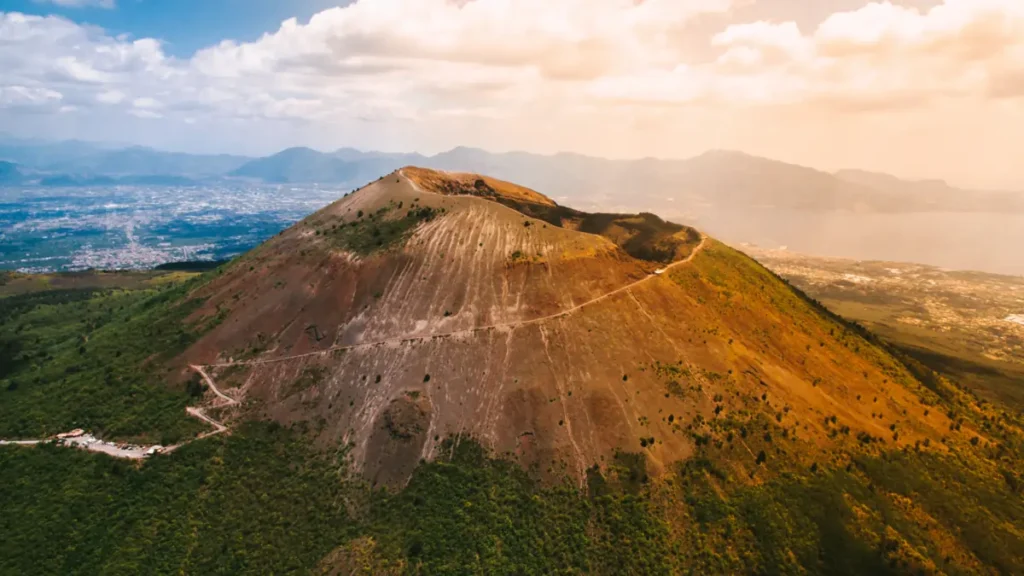
Read also: Our Dynamic Planet: How Plate Tectonics Shapes the World
2. Mount St. Helens, USA
Located in the Cascade Range of Washington state, Mount St. Helens is a stratovolcano formed by the subduction of the Juan de Fuca Plate beneath the North American Plate. Its 1980 eruption, the deadliest and most economically destructive in U.S. history, dramatically altered the landscape.
Although less active since 1980, ongoing monitoring reveals intermittent seismic activity and dome growth, indicating the volcano’s potential for future eruptions. Future eruptions could cause significant damage and disruption to nearby communities and infrastructure. Strict exclusion zones and early warning systems are in place to protect communities from future hazards.
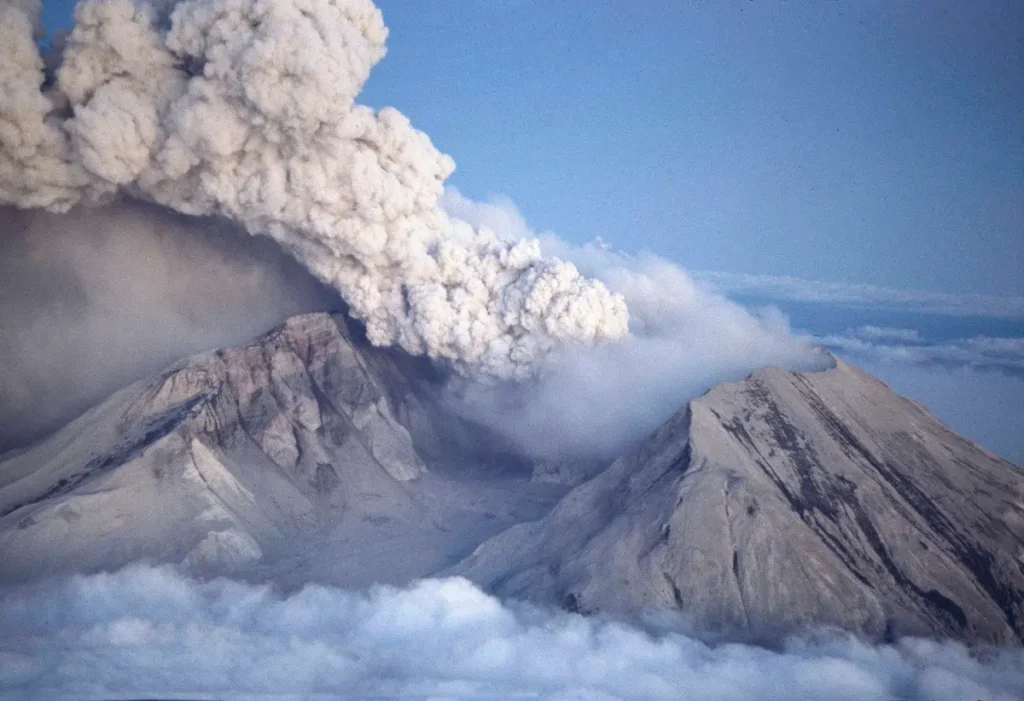
3. Popocatepetl, Mexico
It is also a composite cone volcano in central Mexico’s Puebla, Morelos, and Mexico states. It is located in the eastern half of the trans-Mexican Volcanic Belt. Next to Citlaltepetl is Mexico’s second elevated peak and one of the world’s most dangerous volcanoes.
The composite cone volcano consisted of a vertical broad crater. The keen Ventorrilo on the NW alters the casual symmetrical eruptions of a prior volcano. According to the study of paleomagnetic waves, the eruption is about 730,000 years old.
On 25 December 2005, the explosions created an eruption that released a massive quantity of smoking and ash to about a distance of 3km into the ambiance. On 8 May 2013, it exploded again and lasted for a record of 3.5 hours. The last time it exploded was on the 27th and 28th of February 2024, about 13 times just within a single day, and it led to the elimination of about 22 flights at Puebla International airports.
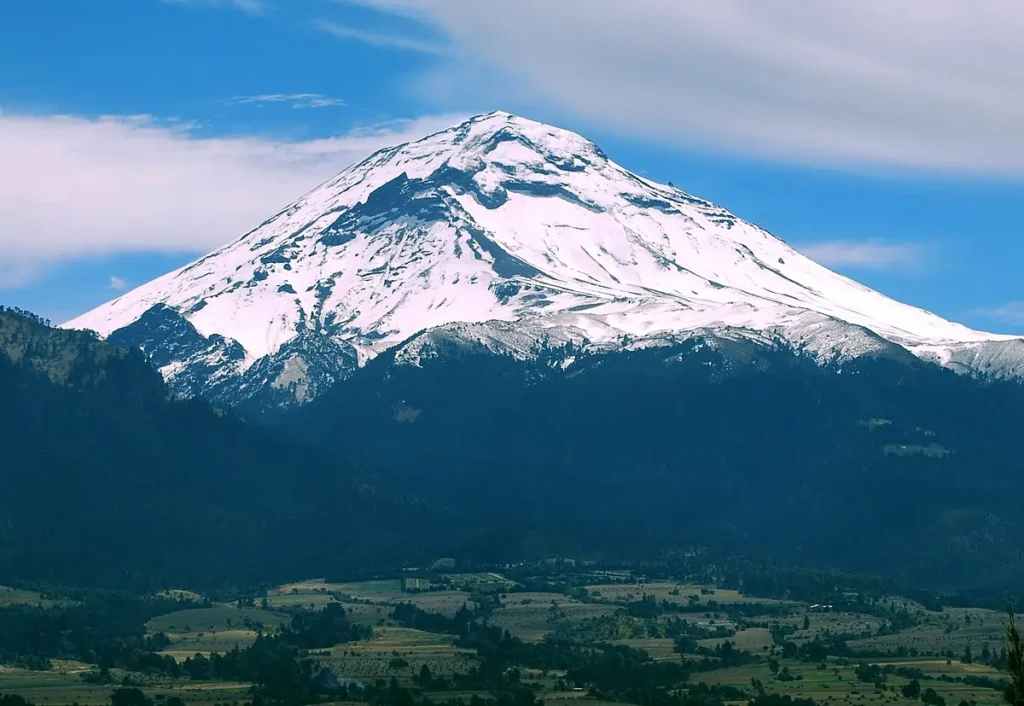
4. Sakurajima, Japan
An energetic composite cone volcano that used to be an island and now a peninsula is the most energetic explosion in Japan. Kita-dake is Sakurajima’s elevated peak, rising to about 1117m above the coastline level, and is considered one of the most dangerous in the world.
Constant monitoring of the assumptions of the volcano is crucial because it is hugely inhabited by people, with 680000 inhabitants in the city of Kagoshima, which is just a short distance away from the volcano. The lava flows of Sakurajima have become a massive attraction for tourists. But the same has made it one of the most dangerous volcanoes in the world.
On February 14, 2024, it was the last time the eruption appeared at the Minamidake crater on Sakurajima at 18:33 JST, releasing smoke for over 5 km in height and discharging rocks as far as 1.3 km away.
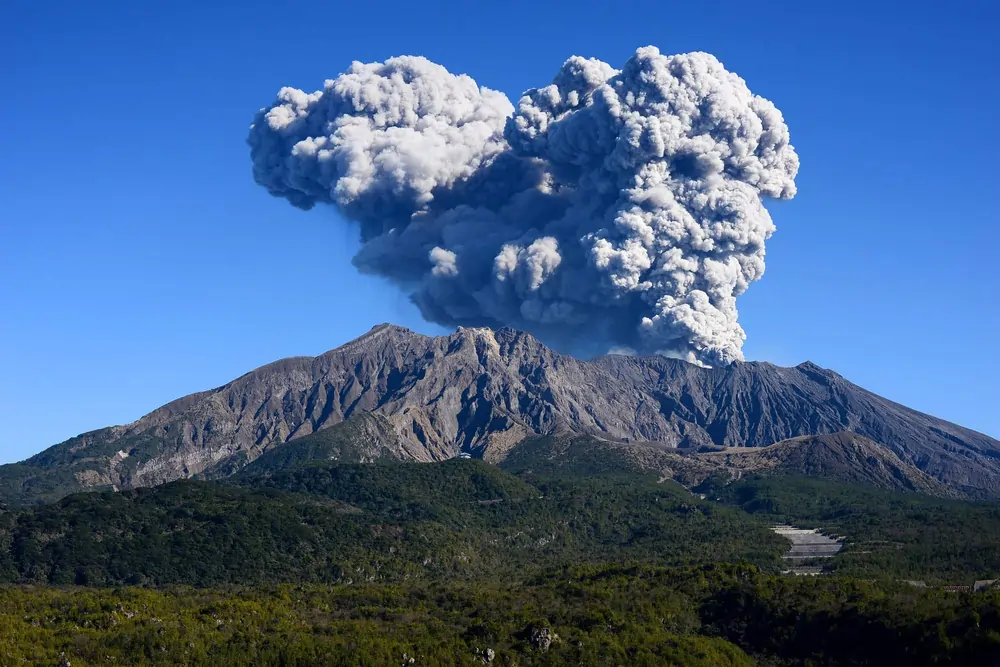
5. Mt.Merapi, Indonesia
Mt Merapi is an energetic volcano between Central Java’s border and the Specified region of Yogyakarta, Indonesia. It has been one of the most vigorous erupting volcanoes since 1548. Smolders could be seen coming out from the mountains, and several explosions have caused colossal damage.
Merapi is a group of volcanoes in the southern part of Java. It is one of the least vigorous volcanoes in Indonesia. The volcanic eruptions of Merapi need to be constantly monitored, and thus, Seismic monitoring started in 1924. The Babadan, Selo, and Plawangan observation stages have developed.
In 2024, the eruptions appeared on 19 January at 6:59 a.m., with volcanic flows going up to 2km. On 21 January, the explosion released lava up to 2 km and warm clouds to 100 meters.

6. Mt.Nyiragongo, DRC
It is one of the most dangerous volcanoes in the world. It is situated at 3470 m in the Virunga mountains and is an active volcano associated with the Albertine Rift. It is located in the interior of Virunga National Park, Democratic Republic of the Congo, near about 12 km.
The lava lake of Nyiragongo has been considered the most voluminous lava lake in history and one of the most dangerous volcanoes. The highest elevation of the lava has been documented to be about 3250m.
The volcano is constantly observed by a team of scientists at the Goma Volcano Observatory, with seismic information made every four minutes and temperature information created every 10 minutes.
It last erupted on 22 May 2021. The lava moved towards the Goma airport and then towards the city center of Eastern Goma. The North Kivu province’s military confirmed the eruption around 17:00 GMT. There was an electricity failure during the explosion.
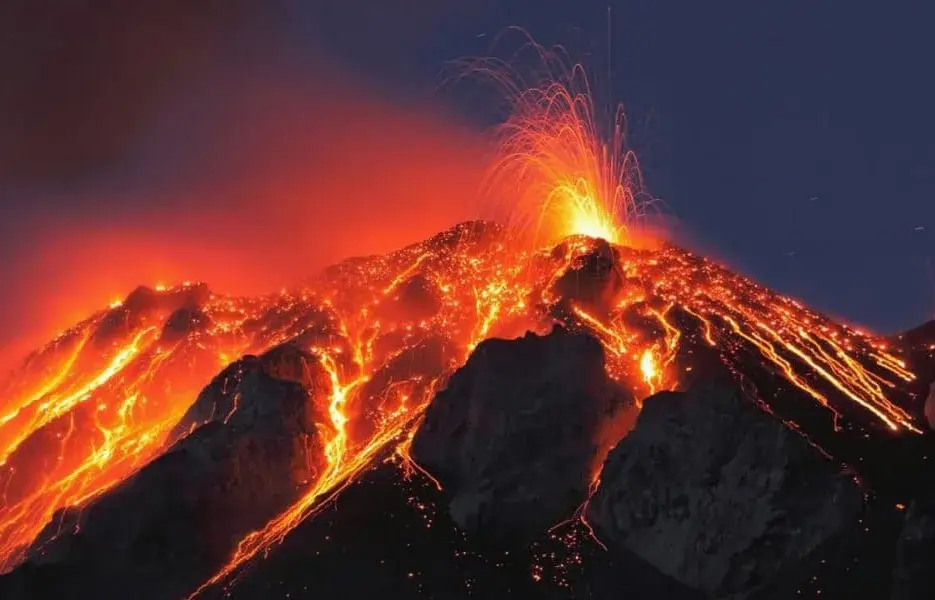
7. Mt Rainier, USA
Mt Rainier, located at an elevation of 14410 feet, is one of the most elevated eruption peaks in the UK. It has the most extensive aline glacial system outside Alaska and the world’s most significant volcanic glacier cave system. As a chunk of the Pacific Ring of Fire, it is one of the best examples of Cascade volcanism.
Explosions and flows have shaped the place, and upcoming eruptions serve as a warning to the people around it, making it one of the most dangerous volcanoes in the world. It is one of the most active volcanoes in the Cascade Range and one of the most dangerous volcanoes in the world.
The most recent eruption was documented in 1820 and 1854, but it is sometimes heard that it erupted between 1858, 1870, 1879, and 1882, as well as in 1894. In context to the pieces of evidence, the volcano will explode, grow, and collapse.

8. Taal Volcano, Philippines
Taal is a composite cone volcano with a 5km broad volcanic island and a lake caldera in Batangas, about 50 meters south of Manila. It is the second most energetic and one of the most dangerous volcanoes, with evidence of 38 explosions. This volcano is part of a chain lying on the western edge of Luzon.
They were put in place below the Philippine Mobile Belt. Evidence showed that sulfur dioxide levels increased around the explosions in June 2023. On June 29, PHIVOLCS discovered that it had released a massive smog that lasted only one minute and eight seconds.
In the middle of September, the same smog was released, similar to June, forcing the cancellation of classes in Batangas and nearby cities. A minimum of 3402 tons of Smog were released every day. The volcano was active from 2019 to 2022 and proved fatal to the inhabitants and ambiance there. As a result, it is considered one of the most dangerous volcanoes in the world.
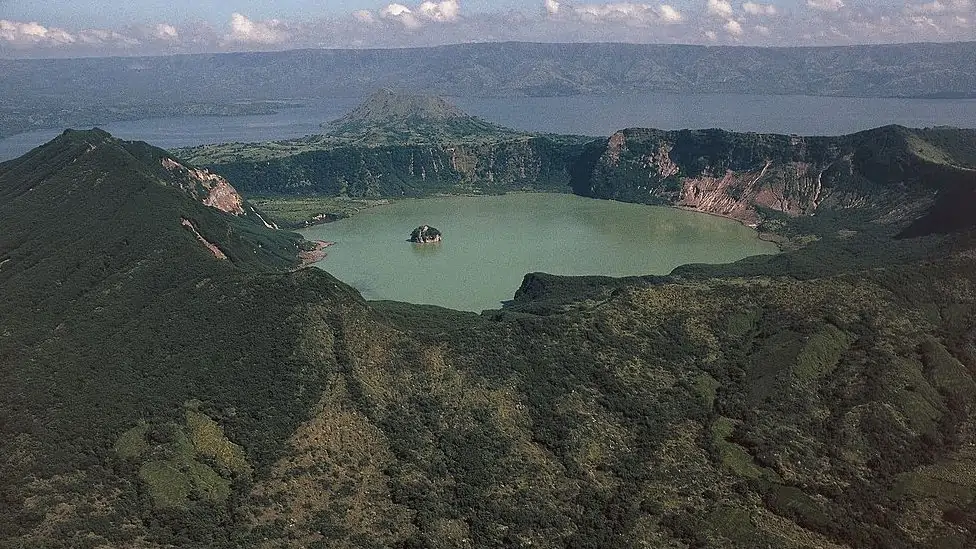
9. Kilauea, USA
Located on the Big Island of Hawaii, Kilauea is one of the world’s most active volcanoes. It is a shield volcano characterized by its broad, gently sloping shape and basaltic lava flows. Kilauea is part of the Hawaiian-Emperor seamount chain, formed by a hotspot in the Earth’s mantle.
Read also: Explore the Earth’s Interior: A Dynamic World Beneath
Kilauea has been erupting almost continuously since 1983. The most recent eruption began in September 2021 and continues as of November 2023. This eruption has produced lava flows that have destroyed homes and infrastructure and created new land.
Kilauea’s ongoing eruption poses a significant threat to communities on the Big Island. Lava flows can destroy homes and infrastructure, and volcanic gases can cause respiratory problems.
Kilauea’s eruptions have had a devastating impact on the island of Hawaii. Lava flows have destroyed homes, businesses, and roads, and the volcanic gases released during eruptions have also caused respiratory problems for residents.

10. Eyjafjallajökull, Iceland
Eyjafjallajökull is a stratovolcano located in southern Iceland. It is covered by an ice cap, which can cause dangerous floods and lahars (volcanic mudflows) during eruptions.
Eyjafjallajökull has erupted several times in recorded history. Its most recent eruption was in 2010, which caused major disruptions to air travel across Europe due to the large ash plume.
The 2010 eruption of Eyjafjallajökull had a significant impact on Iceland and Europe. The ash plume caused widespread disruptions to air travel, resulting in floods and damaged infrastructure.
Read also: Land of Contradiction – Why is Iceland volcanically so active?
Eyjafjallajökull is currently dormant, but scientists continue to monitor it closely. The volcano is considered to be a potential threat due to its ability to produce large ash plumes that can disrupt air travel. Because of this threat, it is considered one of the most dangerous volcanoes in the world.
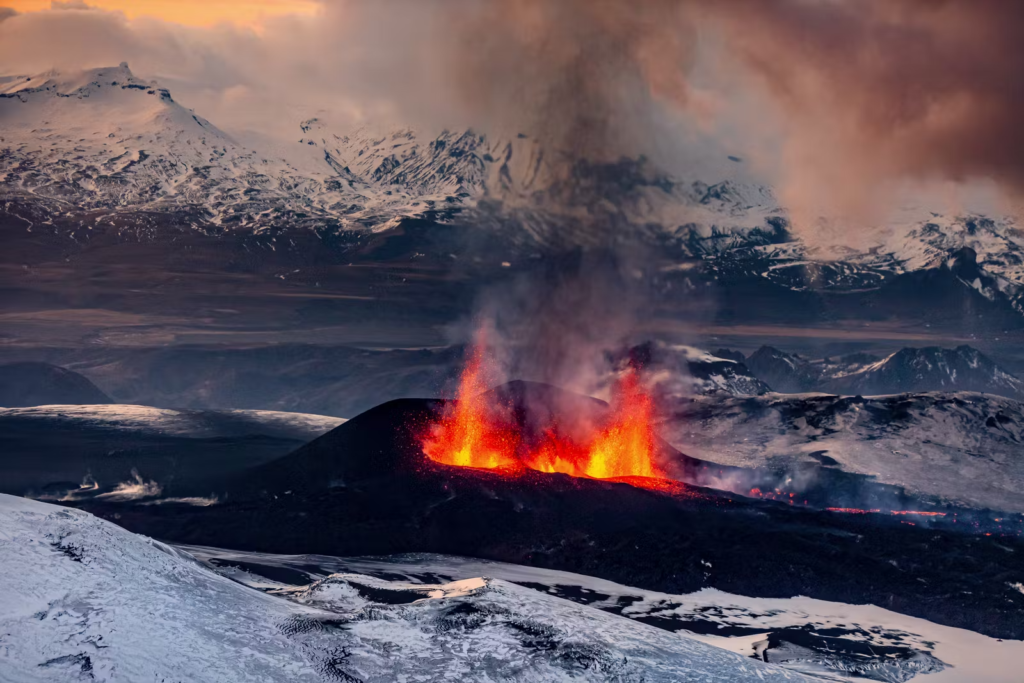
Associated Volcanic Hazards
While awe-inspiring in their beauty, volcanoes harbor destructive potential that can unleash a cascade of deadly hazards. To grasp the sheer destructive potential of the most dangerous volcanoes, we must first understand the different ways they unleash their fury. Volcanic eruptions aren’t one-size-fits-all; they vary dramatically in style and pose hazards.
Types of Volcanic Eruptions
How a volcano erupts plays a crucial role in determining the extent of its devastation. Volcanic eruptions are broadly classified into two categories: explosive and effusive.
Read also: Types of Volcanoes: A Guide to the 6 Most Dangerous Forms
Explosive Eruptions: Pyroclastic Flows, Ash Clouds, and Volcanic Bombs
Explosive eruptions are characterized by their violent expulsion of magma, gas, and rock fragments into the atmosphere. These eruptions generate pyroclastic flows – superheated avalanches of gas and debris that race down volcanic slopes at incredible speeds.
In the most recent eruption of Mount Vesuvius in 79 AD, pyroclastic flows were responsible for the destruction of Pompeii and Herculaneum. Ash clouds, another hallmark of explosive eruptions, can disrupt air travel and pose significant respiratory hazards, as witnessed during the 2010 eruption of Eyjafjallajökull in Iceland. Volcanic bombs, large projectiles ejected during eruptions, can cause severe damage to infrastructure and pose a direct threat to life.
Effusive Eruptions: Lava Flows and Their Devastating Effects
In contrast, effusive eruptions are characterized by a relatively gentle outpouring of lava. While less explosive, these lava flows can still be incredibly destructive, incinerating everything in their path and reshaping the terrain. The Kilauea volcano in Hawaii is known for its frequent effusive eruptions, with the 2018 eruption displacing thousands and destroying hundreds of homes.
Secondary Hazards: Lahars, Tsunamis, and Volcanic Gases
The dangers of the most dangerous volcanoes extend beyond the immediate eruption itself. Secondary hazards triggered by volcanic activity can wreak havoc on a wider scale.
Deadly Lahars (Volcanic Mudflows)
Lahars, or volcanic mudflows, are a devastating secondary hazard. These fast-moving mud, rock, and debris rivers are triggered by heavy rainfall or snow and ice melting on a volcano’s slopes. Lahars can travel great distances, burying towns and infrastructure beneath meters of thick sludge. The 1985 eruption of Nevado del Ruiz in Colombia tragically demonstrated the destructive power of lahars, claiming over 23,000 lives.
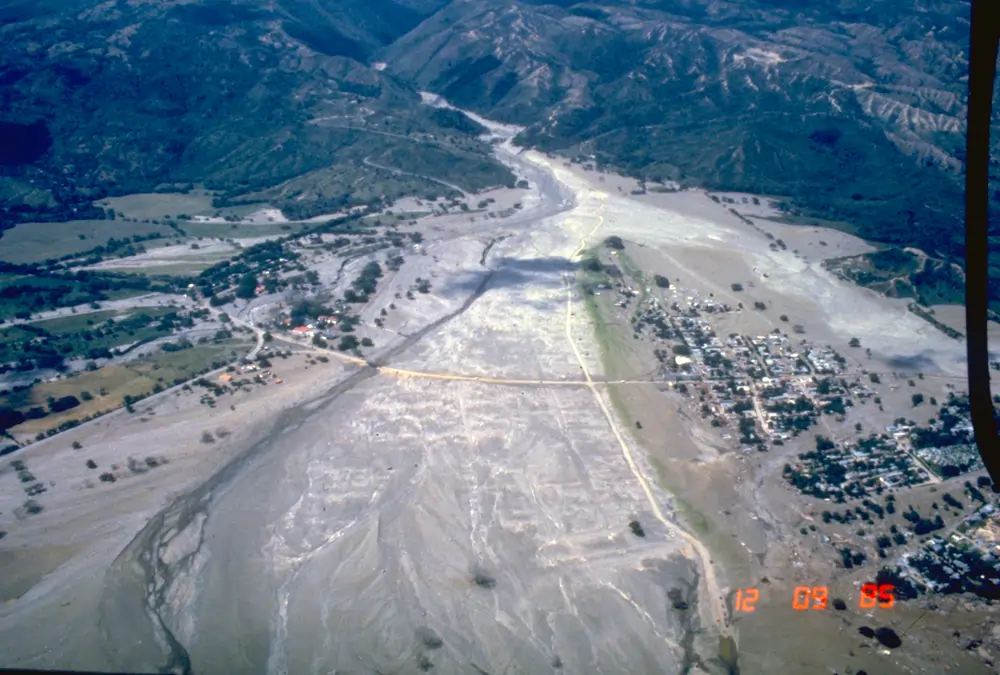
Volcanic Tsunamis
Volcanic eruptions, particularly underwater or near coastlines, can trigger tsunamis. These giant waves can travel thousands of miles across oceans, wreaking havoc on distant shores. The 2022 Hunga Tonga–Hunga Haʻapai eruption generated a tsunami that caused damage as far away as California and Peru. The 2018 eruption of Anak Krakatoa in Indonesia triggered a tsunami that killed hundreds and displaced thousands.
Volcanic Gases
Volcanic gases, including sulfur dioxide, carbon dioxide, and hydrogen sulfide, can be toxic and even lethal if inhaled. These gases can pose a significant health risk to communities near active volcanoes. The ongoing eruption of Nyiragongo in the Democratic Republic of Congo, for instance, has released toxic gases that have displaced residents and caused respiratory problems.
Monitoring and Mitigation
The world’s most dangerous volcanoes may seem like unstoppable forces of nature, but scientists and communities are constantly working to understand and mitigate their risks. By harnessing cutting-edge technology and implementing well-thought-out strategies, we can better anticipate eruptions and protect those living in the shadow of these fiery giants.
Volcano Monitoring
Volcanologists employ a multifaceted approach to monitoring the world’s most dangerous volcanoes. This involves a symphony of instruments and techniques, each crucial in deciphering the volcano’s hidden intentions.
Seismic Activity: Early Warning Signs
One of the most reliable indicators of volcanic unrest is seismic activity. As magma rises and forces its way through the Earth’s crust, it triggers earthquakes that can be detected by sensitive seismometers. Increased frequency and intensity of earthquakes often precede eruptions, as seen in the 2021 eruption of La Palma’s Cumbre Vieja volcano, preceded by thousands of tremors.
Gas Emissions: Clues from Volcanic Breath
Volcanoes also emit gases like sulfur dioxide (SO2) and carbon dioxide (CO2), which can provide valuable insights into the state of the magma below. Changes in gas composition and emission rates can indicate that magma is rising and may soon erupt. For example, a significant increase in SO2 emissions was observed before the 2022 eruption of Tonga’s Hunga Tonga-Hunga Haʻapai volcano.
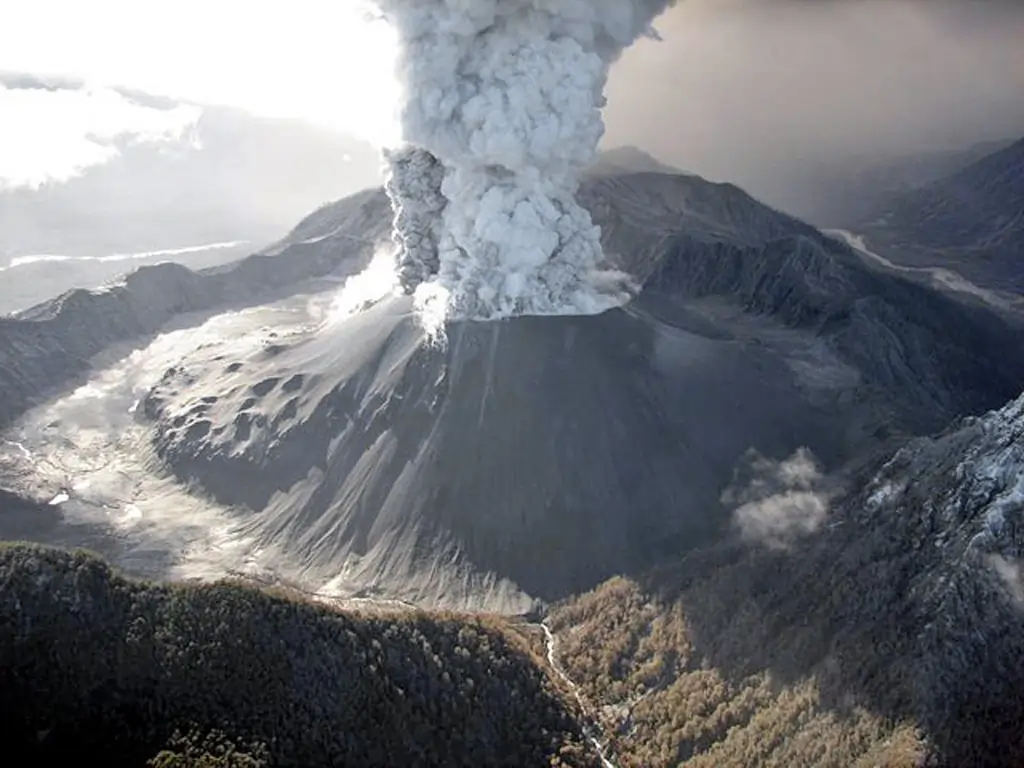
Ground Deformation
As magma accumulates beneath a volcano, it can cause the ground to bulge and deform. This subtle swelling can be measured using GPS instruments and satellite-based radar, providing another crucial piece of the volcanic puzzle. Such ground deformation was observed before the 2018 eruption of Hawaii’s Kilauea volcano, allowing for early evacuations.
Strategies for Volcanic Risk Reduction
Mitigating the risk of volcanic eruptions involves a combination of preparedness, evacuation plans, and innovative engineering solutions.
Evacuation Plans and Preparedness
Timely evacuation is often the difference between life and death during a volcanic eruption. Well-designed evacuation plans, effective communication, and public education are essential to reduce the severity of the most dangerous volcanoes. The successful evacuation of over 85,000 people before Mount Pinatubo’s 1991 eruption exemplifies the importance of such preparedness.
Engineering Solutions
In some cases, engineering solutions can mitigate volcanic hazards. Barriers and channels have been used to divert lava flows, while protective structures like levees and dams can help control lahars (volcanic mudflows).
Read also: Facts About Igneous Rocks: 7 Interesting Things About the fiery blocks
The constant threat of the most dangerous volcanoes necessitates a continuous monitoring, learning, and adapting cycle. By harnessing the power of science and embracing preparedness, we can better coexist with these formidable forces of nature, safeguarding lives and communities in their shadow.
Conclusion
Our exploration of the world’s most dangerous volcanoes reveals a sobering truth: Earth’s fiery heart beats with an unpredictable rhythm. These geological giants remind us of the immense power beneath our feet, From the 2023 eruption of Mauna Loa to the ongoing activity at Stromboli and Popocatépetl. Understanding the potential devastation of these most dangerous volcanoes is paramount for the safety of millions living in their shadows.
While the threat of eruption is real, it’s equally important to acknowledge the vital role volcanoes play in our planet’s ecosystem. They enrich the soil, create new land, and influence our climate. Respecting these most dangerous volcanoes means recognizing their destructive potential and essential place in the natural world.
As we progress, continued monitoring and research of these most dangerous volcanoes will be crucial for predicting and mitigating future eruptions. By understanding and respecting the power of these fiery giants, we can better prepare for the inevitable day when they awaken once more.
FAQs
1. What makes a volcano “dangerous”?
A combination of factors determines a volcano’s danger level:
Eruption Frequency: How often does it erupt? Volcanoes with a history of frequent eruptions pose a higher risk.
Eruption Style: Some volcanoes produce slow-moving lava flows, while others generate explosive eruptions with pyroclastic flows and ash clouds. Explosive eruptions are generally more hazardous.
Proximity to Population: A volcano near a densely populated area is more dangerous than one in a remote location.
Volcanic Explosivity Index (VEI): This scale measures the magnitude of eruptions based on the volume of material ejected. Higher VEI eruptions are more destructive.
2. Which volcano is considered the most dangerous in the world?
There’s no single “most dangerous” volcano, as the risk depends on the abovementioned factors. However, several contenders regularly appear on lists of the world’s most dangerous, including Vesuvius (Italy), Yellowstone Caldera (USA), and Nyiragongo (DRC). Each poses unique threats due to its eruption history and proximity to large populations.
3. Can scientists predict volcanic eruptions?
While predicting the exact timing of an eruption remains a challenge, scientists use various methods to monitor volcanoes and assess their potential for eruption:
Seismic Activity: Earthquakes often precede eruptions as magma moves underground.
Ground Deformation: Changes in the shape of a volcano, such as bulging, can indicate rising magma.
Gas Emissions: Changes in the types and amounts of gases released can signal changes in the magma’s chemistry.
Thermal Monitoring: Increased heat flow can signify magma approaching the surface.
4. What are the main hazards associated with volcanic eruptions?
Pyroclastic flows: Superheated mixtures of gas, ash, and rock that race down slopes at high speeds.
Lahars: Mudflows triggered by volcanic activity, often devastatingly destructive.
Lava flows: While visually striking, these are usually slow-moving and less of an immediate threat to life.
Ashfall: Can cause respiratory problems, damage infrastructure, and disrupt air travel.
Volcanic gases: Some eruptions release toxic gases like sulfur dioxide, which can be harmful to breathe.
5. Are supervolcanoes a real threat?
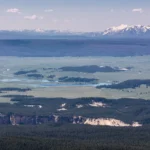
Yes, supervolcanoes are a real, albeit rare, threat. They can potentially cause global-scale devastation through massive eruptions and climate-altering ash clouds. The Yellowstone Caldera in the U.S. is a well-known example of a supervolcano.
6. Are there any benefits to living near volcanoes?
Yes, surprisingly! Volcanic areas often have:
Fertile soil: Volcanic ash is rich in nutrients, making it excellent for agriculture.
Geothermal energy: Heat from volcanoes can be harnessed for electricity.
Tourism: Volcanoes are awe-inspiring, attracting visitors and boosting economies.


